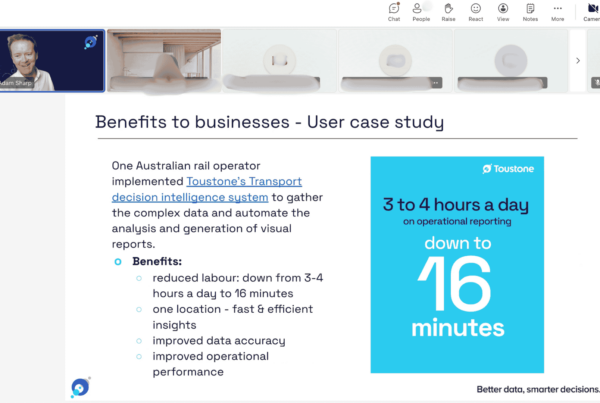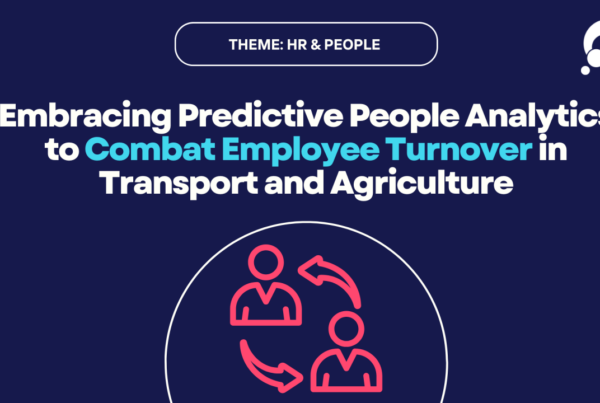Growing population, climate change, and increasing costs put huge pressure on the agricultural industry to continue to provide food for our planet while using fewer resources. Agribusinesses must constantly innovate to improve productivity and enhance efficiency. Over the last decade, a boom in technology has enabled the agricultural sector to step up to the challenge by going digital.
The increase in digital technology has the potential to further drive greater efficiency and productivity, but it also creates a mountain of data. This is what is known as big data.
Many organisations are overwhelmed by this volume of data. But big data has the potential to be of great value – you just have to know how to use it.
When data gets too big
Big data refers to the massive amount of data created by the increase in the Internet of Things (IoT), smart machinery, sensors, smart meters, and various individual internal and external data sources all leveraged in the production of goods and services.
From rural producers right through to retail, are all-seeing and implementing new IoT technology which provides valuable data but is only truly useful if correctly presented for quick oversight.
Around the globe, major industry bodies and producer funded research organisations are backing technology R&D to advance the industry forward whilst reducing costs and creating more sustainable practices. This means the development of even better technological advances is on the way – delivering even more data.
For many agribusinesses, it’s just too much.
Dealing with big data often results in a time-consuming and costly reporting process. It creates silos of data that make it nearly impossible to collate. Individuals or Departments work from different data sources. Data security can become a problem if not correctly protected. This creates a perfect storm for errors to be easily introduced, leading to inaccurate decisions that cost you money.
Big data can create problems, or it can revolutionise your agribusiness. It’s all in how you use it.

The potential for big data in agriculture
Agriculture used to be largely driven by gut instinct. Today, technology like IoTs enable greater visibility and oversight of operations, reducing uncertainties and enabling decisions to be data-driven.
The benefits cannot be underestimated. The FAO estimates that every year, ⅓ of the food produced for human consumption is wasted or lost. Using big data to revolutionise agricultural processes is necessary to create more efficiency to help battle the food crisis.
Big data can drive smart decisions and better outcomes in agriculture like:
- Improved yields from data insights on weather patterns, soil temperature, fertiliser requirements, and more
- Efficient use of pesticides and sprays – know how much to use without overdoing it
- Maintain farm equipment with data that predict maintenance requirements and fuel use
- Optimise your supply chain for efficiency
- Remote monitoring of crop and livestock health
- Increased profitability through enhanced efficiency and productivity
To reap the benefits of big data, you need a big data strategy to manage how you gather, share, and use your data. A data strategy considers your business goals and all the data available to you to find out which data is useful. Then, automated reporting delivers just the relevant insights.
To take big data to the next level, you need Decision Intelligence.

How Decision Intelligence accelerates operation performance with big data
Decision Intelligence (DI) turns your complex data into something that makes perfect sense. With a DI solution, you no longer need to worry about sorting through data and organising reports or even reading them – instead, data-driven insights are delivered to you, so you can act.
A DI solution combines human decision-makers with Business Intelligence and Machine Learning. All your data sources are collected and stored in one secure cloud-based location. The data is analysed and presented to you in a visual dashboard. From there, farmers and growers can make data-driven decisions. The result is higher yields at lower costs.
At Toustone, we have the know-how and the tech to put effective insights at your fingertips. We break down the mountain of data into fully automated and intuitive dashboards so you can easily see exactly what is going on in real-time. This abundance of data allows agribusinesses to accelerate the performance of their operations by having the information they need to create meaningful changes.
A DI solution will:
- Remove the manual reporting process
- Stop data silos from forming
- Ensure the security of your data
- Create a single source of truth
- Put predictive insights at your fingertips
- Inject confidence into the decision-making process
- Make sense of big data!
Any agribusiness can make the most out of the data they already have with a DI solution. Our team is ready and waiting to guide your agribusiness to a DI solution that puts big data to work for you.
Want to see how Toustone helped a leading corporate farmer enhance their on-farm efficiencies with Decision Intelligence? Read our case study on Lawson Grains.
“Working with Toustone has been great. They have been able to effectively capture information off multiple platforms and automate it. The solution has definitely made the backend of the office more efficient by getting all that data into one spot. Their personal insight continues to provide different ways to look at the data and get more out of it.”
Mat Well, Business Systems Analyst at Lawson Grains



